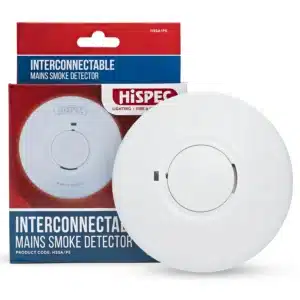Carbon monoxide (CO) is often referred to as the “silent killer” for a good reason. This colorless, odorless gas is produced by the incomplete combustion of fossil fuels, such as gas, oil, and coal. It poses a severe threat to human health and safety, yet it remains undetectable to our senses. For Carbon Monoxide Awareness Week, we want to delve into the dangers of carbon monoxide, explore its sources, and shed light on the critical importance of having carbon monoxide alarms in our homes.
The Perils of Carbon Monoxide:
Carbon monoxide is highly toxic and can be lethal when inhaled in large quantities. It binds to the haemoglobin in our blood more readily than oxygen, preventing oxygen from being transported effectively throughout the body. As a result, vital organs, including the brain and heart, suffer from oxygen deprivation, leading to serious health consequences.
Common Sources of Carbon Monoxide:
Home Appliances: Faulty or poorly maintained gas appliances like furnaces, water heaters, stoves, and dryers can be potential sources of carbon monoxide leaks.
Automobiles: Running a vehicle inside an enclosed space, such as a closed garage, can lead to carbon monoxide buildup.
Fireplaces and Chimneys: Poorly ventilated fireplaces can release carbon monoxide into living spaces.
Generators: Using portable generators in enclosed areas, like homes or garages, can be extremely hazardous.
Grills and Barbecues: Operating charcoal or gas grills indoors can produce dangerous levels of carbon monoxide.
Understanding the Symptoms:
The symptoms of carbon monoxide poisoning can be subtle and often mistaken for other illnesses, such as the flu. Common symptoms include headaches, dizziness, nausea, fatigue, confusion, and shortness of breath. Prolonged exposure or high concentrations of carbon monoxide can lead to loss of consciousness and even death.

Carbon Monoxide Alarms:
Installing carbon monoxide alarms is the most effective way to protect yourself and your loved ones from this hidden threat. These alarms are designed to detect even trace amounts of carbon monoxide in the air and emit a loud warning signal to alert occupants of potential danger. They act as a crucial early warning system, giving you valuable time to evacuate and seek fresh air if carbon monoxide is present in your home.
Best Practices for Carbon Monoxide Safety:
- Install carbon monoxide alarms on every level of your home and near sleeping areas. Follow the manufacturer’s instructions for proper placement.
- Test your carbon monoxide alarms regularly to ensure they are functioning correctly.
- Schedule regular maintenance for gas appliances, fireplaces, and chimneys to prevent leaks.
- Never use portable generators, grills, or other gas-powered equipment indoors or in enclosed spaces.
- If a carbon monoxide alarm sounds, evacuate the premises immediately and contact emergency services.
Carbon monoxide is a serious threat that can lurk unnoticed in our homes. Understanding its dangers and sources is the first step toward safeguarding our families and ourselves. By taking proactive measures, such as installing carbon monoxide alarms and following best practices for safety, we can breathe easy, knowing that we have taken crucial steps to protect against the silent killer.
Remember, vigilance and awareness are the keys to a safer home and a safer life.




























